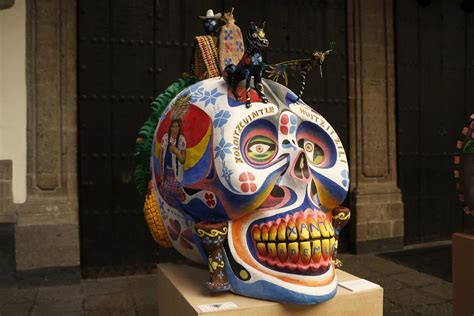
Picture this: rows upon rows of human skulls stacked neatly on wooden racks, bleached by the sun, staring out into the sacred courtyards of ancient Tenochtitlan. This isn’t a scene from a horror movie — it’s history. Meet the Tzompantli, one of the most chilling and misunderstood relics of Aztec civilization.
But here’s the twist — what was once a terrifying display of power and sacrifice is now being reimagined in colorful, bold, and hauntingly beautiful ways by modern Mexican artists. Welcome to the world where ancient ritual meets contemporary canvas.
What Exactly Was a Tzompantli?
In the heyday of the Aztec Empire, the Tzompantli (from the Nahuatl word for “skull rack”) was a kind of ceremonial structure used to publicly display the skulls of sacrificial victims. These victims were often prisoners of war, honored not with scorn but reverence — their deaths seen as offerings to the gods.
The racks were usually constructed of horizontal wooden poles supported by vertical stakes. Skulls were threaded through the poles, creating a macabre yet strangely symmetrical grid. For the Aztecs, this was not brutality for its own sake — it was cosmology in action. Blood and sacrifice kept the sun rising, the rain falling, and the world spinning.
Spanish conquistadors were horrified by what they saw, often exaggerating the numbers for effect. While the real count may have been lower than myth suggests, the message was clear: the Aztecs were serious about sacrifice.
The Skull Rack Reborn
Fast-forward to today, and Tzompantli is making a curious comeback — not in temples or pyramids, but in art galleries, city murals, and public installations. Artists are reclaiming the imagery, not to glorify violence, but to reconnect with a cultural identity long buried beneath colonial shame and Catholic overlays.
In Mexico City’s Templo Mayor Museum, you can see a partially reconstructed Tzompantli that archaeologists unearthed — complete with real skull fragments still embedded in the structure. But across town, you might stumble upon a modern rendition made from ceramic, neon lights, or even recycled materials.
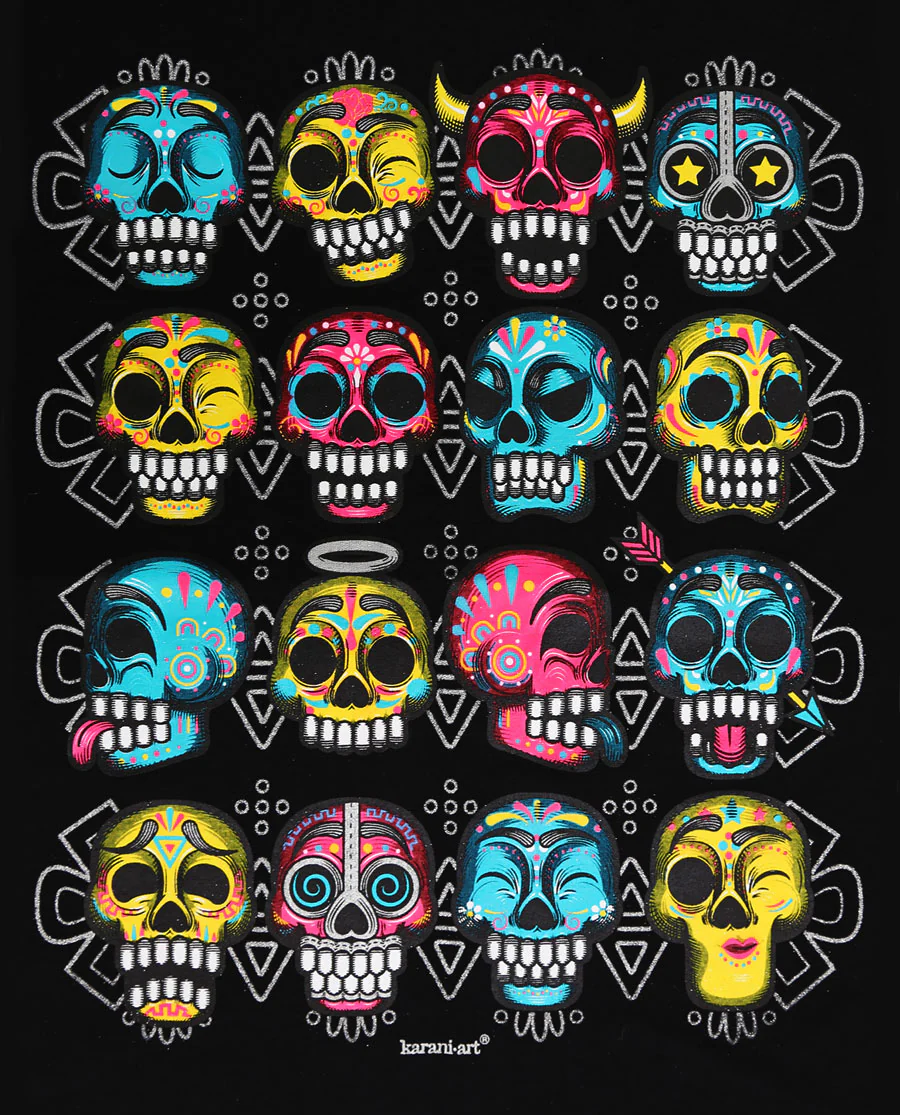
Some artists, like Nahuatl descendant collectives, reinterpret the skull rack using bold colors and Día de Muertos aesthetics — turning fear into reflection, death into continuity.
Why Skulls Still Speak
Skulls have always carried heavy symbolism in Mexican culture. From the sugar skulls of Día de Muertos to the skeletal figures of La Catrina, death isn’t hidden or sanitized — it’s danced with, painted, and worn with pride.
The modern Tzompantli follows this tradition but goes even deeper. In a world still riddled with violence, poverty, and historical erasure, these skulls become a canvas of memory. A silent protest. A reminder of who came before and what was taken.
One installation in Oaxaca used dozens of ceramic skulls embedded with QR codes. When scanned, they told the stories of indigenous activists who died defending their land. This isn’t just art — it’s activism dressed in bone.
Not Just for Museums
During contemporary festivals — like the Macabre Art Fair in Puebla or the Skull Parade in Morelia — modern Tzompantli structures appear as traveling installations. They blend old and new: some with LED eyes, others accompanied by traditional Nahua chants.
Even tattoo artists have embraced the motif. Inking a Tzompantli is no longer taboo — it’s a way to say, “I remember.” A way to carry the weight of culture, identity, and yes — mortality — on one’s skin.
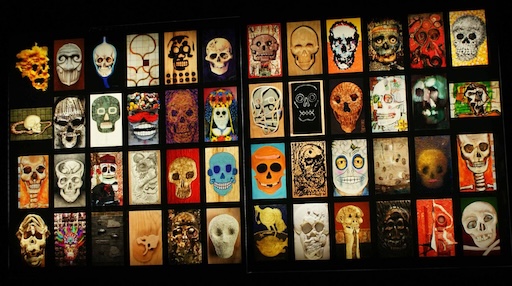
Final Thoughts
What was once feared and demonized is now being reexamined, reinterpreted, and even revered. The Tzompantli of the past shouted messages of power and piety in bone. Today, it whispers something else entirely — resilience, remembrance, and the enduring pulse of a culture that refuses to be erased.
So the next time you see a skull in a gallery or a glowing row of heads at a street festival, don’t flinch. Stop and look. You might just hear the echo of ancient voices saying, “We are still here.”
Share this story and inspire others.
Tags: Tzompantli, Aztec rituals, skull rack, Mexican art, ancient traditions, modern interpretation, Mexico City, human sacrifice, Aztec culture
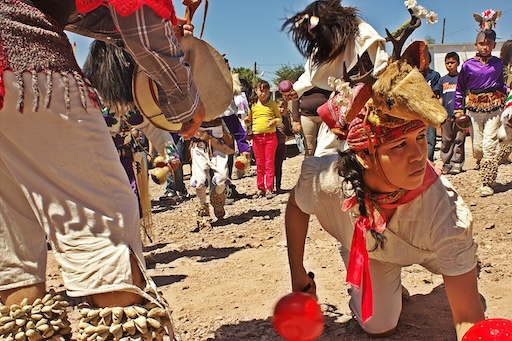 La Danza del Venado – The Sacred Deer Dance of the Yaqui People
La Danza del Venado – The Sacred Deer Dance of the Yaqui People
 Tarahumara Rarámuri – The Ultramarathon Runners of the Sierra
Tarahumara Rarámuri – The Ultramarathon Runners of the Sierra
 La Santa Muerte – The Controversial Saint of Death
La Santa Muerte – The Controversial Saint of Death
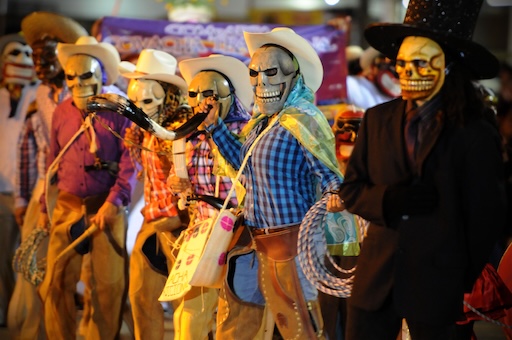 Xantolo – The Huasteca’s Version of Day of the Dead with Masks and Dances
Xantolo – The Huasteca’s Version of Day of the Dead with Masks and Dances
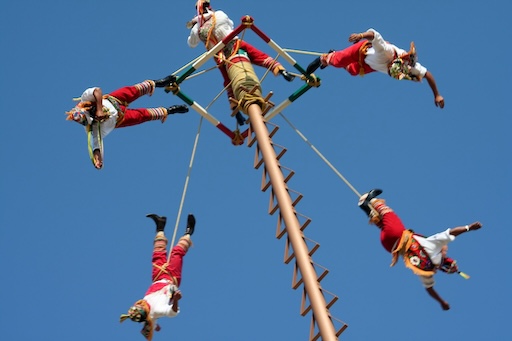 Voladores de Papantla – Men Who Fly from Poles
Voladores de Papantla – Men Who Fly from Poles
 Cenote Sagrado – Sacred Sinkhole of the Maya
Cenote Sagrado – Sacred Sinkhole of the Maya
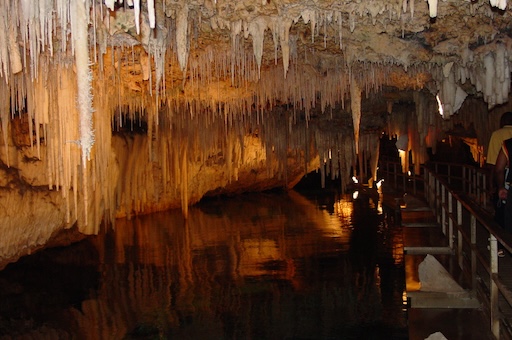 Cueva de los Cristales – Mexico’s Giant Crystal Cave
Cueva de los Cristales – Mexico’s Giant Crystal Cave